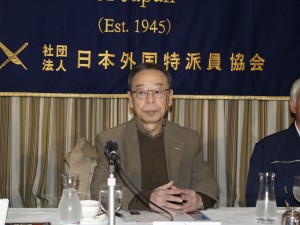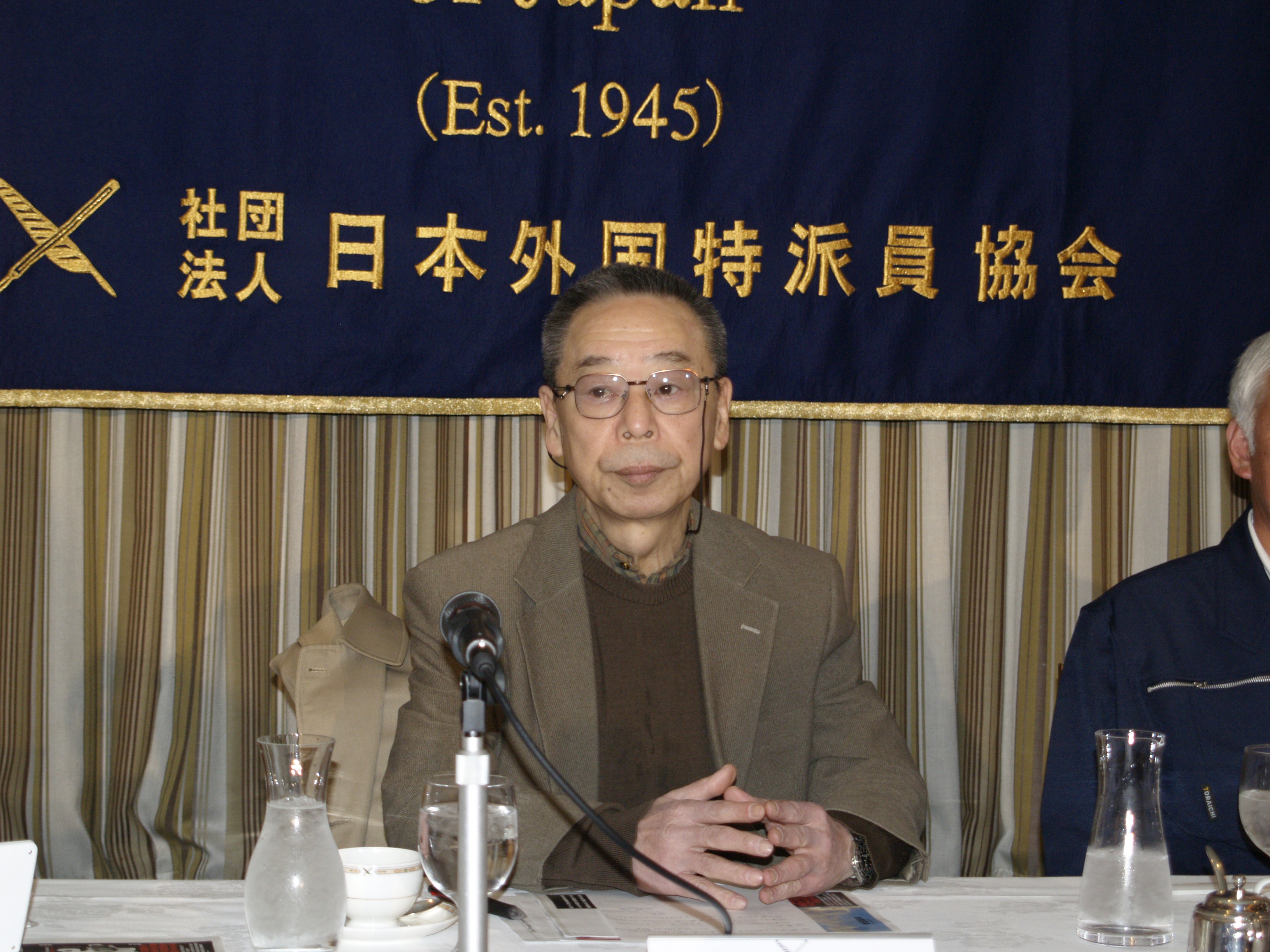
Katsunobu Onda is a writer and investigative journalist who has been chronicling the corporate malfeasance in Japan’s nuclear industry for over two decades and his book Tokyo Electric Power Company (TEPCO): The Darkness of the Empire 「東京電力・帝国の暗黒」which was published in November of 2007 was the first book to dig deeply into TEPCO’S problems and sounded a warning that no one heeded. In some passages it almost eerily predicts the disaster that took place on March 11th, 2011. The book has recently been re-issued and his new book, The Last Will and Testament of A TEPCO Foreman published in February 2012, using first-hand accounts of the cover-ups, shoddy maintenance, labor abuse and corporate malfeasance at Japan’s largest energy provider, makes a strong case that TEPCO needs to be shut down or taken over by the government in order to prevent yet another tragedy.
First encounter with nuclear power plants
The first time Onda had the opportunity to visit a nuclear power plant in his career was 25 years ago at Fukushima Number One nuclear power plant. Onda says that inside the nuclear power plant, and the facilities itself, there are many people who do the daily maintenance work: “I decided to go and visit Fukushima Number 1 nuclear power station 25 years ago, because I heard stories about several people who died from exposure to radiation,” he said.
People who work in nuclear power stations
Most of the time, the people who work inside the nuclear power plant facilities tend to be local people whose main work is in farming or in the fishing industry. These are seasonal occupations, and quite often these people spend the off season going to other places in Japan, to do construction work as well. With the nuclear power plants, the people were able to do their off season work locally. Because they could commute from home, it was a rather attractive kind of job.
Speaking with these people, Onda learned that they all had almost no education with regards to the dangers of radioactivity: “Basically they were given a simple lecture. The lectures were short and ceremonial. They were given very simple background information and immediately after they would be standing at the reactors to work.” In Onda’s findings, most of the nuclear power plant maintenance workers had no understanding of radioactivity and the dangers of radiation. Radiation, of course, is also invisible. He also found out that there were no accurate records kept of how much radiation the workers have been exposed to. As a result, “each person had no idea of how much danger he or she was in by continuing to work at the plants” he said in a press conference in Tokyo.
Personal anger and sorrow
Onda says that the very first impression that he got when he started to cover nuclear power energy issues was that basically he could not forgive the way they functioned: “Nuclear power plants exist on the foundation of sacrificing organic life, whether you are a mammal, a beast or a plant.” “The negative effects of radiation is the same for all,” he said while he started to weep.
The power plant and the coming Great Tokai Earthquake
Onda started reporting on Chubu Electric Company, as a result, he wrote a book on the theme of “the power plant and the great Tokai earthquake.” He says he had similar impressions when he visited TEPCO, but in the case of the Chubu power plant, the reactors that he visited were stuck as a result of “undergoing inspections.” Therefore he was able to really get inside the reactor and view the facility from inside, and at that time, his impression was that, “not only there were no real understanding of a danger” or a deeper understanding of the possible replications of high radiation exposure, but he also thought from a technical point of view, that he had very great doubts with regard to the preparations in case a very big earthquake occurred.
Not only he discovered that there was a great danger for the people working inside the plant, but he felt at that time he did his research, that “if there were a real big accident, this would not only be disastrous and dangerous for the people working inside the power plant, but also for the people living around the plant.” And the accident could inevitably affect the people around the world as well.
A causal relationship between nuclear accidents and earthquakes
Onda has spent many years working as a reporter for a weekly news magazines and over time, when there were opportunities, he did more in depth reporting, for example when there was an accident at the Kashiwazaki Kariwa plant in 2007 and also for the Fukushima accident last year as well. Onda says that he has tried to convey his concerns to the greater public to the best of his efforts.
“I feel very strongly that five years ago, after the accident at Kashiwazaki Kariwa, it was made very clear to everyone who was paying attention, that there is causal relationships between earthquakes and nuclear power plants accidents.” Yet, it seems that the lessons were not very well learnt after the disastrous situation at Fukushima.
At that time, Onda felt that he needed to bring that matter to the public and he brought together his book called TEPCO, The Darkness of The Empire.
A source within the nuclear power plant company
Over the years, he has written many articles in many magazines about the nuclear power plant issues. One person served as a strong foundation for his reporting. That was deceased Mr. Norio Hirai. Mr. Hirai was a foreman at a TEPCO power plant.
Onda says that in the past, it was very difficult for trying to get answers and honest opinions from people within the electric power plants and electric power companies themselves, therefore Mr. Norio Hirai was a very special person to him, because the man was the first person to be a whistle blower, “someone who brought the electric power plants problems to light from within the company.”
From Mr. Hirai, Onda has received very valuable information, such as the status of radiation exposure of the workers inside the plant. Mr. Hirai gave Onda more detailed information about life inside the plant, and told him about the “structural and technical problems with the plants,” and listening to him, Onda says he could understand the issues very well, because, himself has had the opportunity to view the installations from inside.
For years, the government, TEPCO, and other electric utility companies in Japan have insisted on the “safeness” of the nuclear power plant facilities to the public. Onda believes that the electric utility companies, the power generating industry itself, and the government are all one single unit, that’s why he refers to it as “the nuclear mafia.”
Money, the power of “the nuclear mafia”
The root of the power of the nuclear mafia lies in the fact that they have money. Using the power of money, they were able basically to push upon the public this myth of safety and as a result, “they were able to convince the media, including myself that this myth was actually true.” The Japanese media also played an active part in perpetuating the deceptive activities of the nuclear industry: “They bare a tremendous responsibility for helping the government and the electric industry to perpetuate this myth.” Onda says. “When I look back on what has happened, I feel an enormous feeling of anger and regret, feeling powerlessness that I was not able to do anything more.”
Fight against the lobby of nuclear energy
Onda is now a freelance journalist and writer, he said that although he feels tremendous regret, he has not lost his fighting spirit at all, in fact he intends to work and report more regarding nuclear power plants. Now that he heard people like Mr. Naoto Matsumura (the Buddha of Fukushima) and his colleagues are trying to do something about this issue, Onda says it inspires him to keep on writing and investigating. He was the first journalist to really shine light into the darkness of the TEPCO empire; many hope that Mr. Onda will finally expose the dangers of Japan’s nuclear industry before all of Japan is exposed to the danger from their mistakes and corporate malfeasance.
